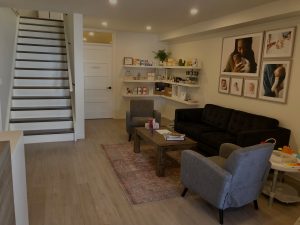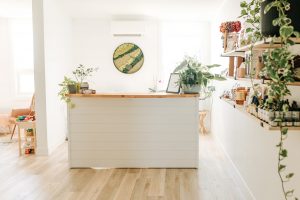March is world wide Endometriosis Awareness Month. At The WOMB, we would like to bring attention to it because it affects an estimated 176 million women worldwide, and some women don’t even know they have it!
Endometriosis is a gynecological condition that causes uterine tissue to grow outside of the uterus. The most common symptoms are significant period pain and infertility. It’s a condition we are really passionate about treating because we don’t like anything standing in the way of your fertility AND there are those of us who have it and it kind of sucks!

How do you know if you have endometriosis? The trouble with endometriosis is that the diagnostic method is the same as the treatment method: laparoscopic surgery. Surgery is the standard way to visualize the uterine tissue growths, aka “endometriomas”, and to remove these growths. However, we prefer to diagnose and treat endometriosis based on symptoms alone. You may have endometriosis if you experience the following:
• Chronic period pains in your back, pelvis, and/or legs
• Pain before and after your period
• Period pain that developed in your 20s
• Pain during sex and/or going to the bathroom
• Ovulatory pain
• Heavy periods or mid-cycle bleeding
• A family member with endometriosis (in fact you’re 7x more likely to have it if your mother or sister has it). My mom had it, so I always knew it was coming for me!
What’s the best way to treat endometriosis? Sadly, there is no known cure for endometriosis besides menopause. The recommended western treatment is laparoscopic surgery and suppressive hormones, but the endometriomas will grow back eventually. It’s unfortunately not the best solution; it’s a race against the clock. Luckily, there’s tons of support at The WOMB for endometriosis. Naturopathic medicine, acupuncture, pelvic health physiotherapy, and osteopathy have all proven to help manage endometriosis and improve your quality of life with the condition! Here are some of the therapies that can change your life with endo:
• Naturopathic medicine: herbs and supplements for the prevention and management of endometriosis• Acupuncture: pain relief, heavy bleeding reduction, cycle regulation
• Pelvic health physiotherapy: decrease pelvic floor tension and muscle spasms
• Osteopathy: reduce adhesions and scar formation
Diet and lifestyle changes also make all the difference. Many of our patients have experienced reduced pain on a gluten and dairy free diet, and all of our patients feel better with daily exercise. I love exercising, but I have to admit I do love some gluten every now and then! Foundations of health like adequate sleep and stress management also play a role in the severity of endometriosis. I notice my pain is much worse when I’m stressed and going to bed too late. Your overall physical and mental health always matter.
Now let’s get to the good stuff. Our favourite three recommendations for endometriosis!
My Top 3 EASY Endometriosis Tips: Tried and true by Dr. Caleigh
- 1. N-Acetyl-Cysteine: It’s just an amino acid. Women with endometriosis treated with NAC showed a statistically significant reduction in the growth of endometriomas compared to placebo, leading to early cancellation of surgery!
- 2. The “end-endo-pain” trail mix: All you need is dark chocolate, almonds, and walnuts. The combination is the ultimate anti-inflammatory and antioxidant snack (and it’s super tasty too!)
- 3. Castor oil: When applied over the uterus, it can increase blood flow and activate your parasympathetic nervous system (your resting and relaxing nerves) to calm uterine and bowel spasms. Massage a tablespoon over your uterus before bedtime.
Endometriosis can be an isolating condition, but you are not alone. I am with you and so are 175 million other brave women all over the world! If the symptoms we’ve listed above resonate with you, book an appointment to start getting to the bottom of your pain. You are your biggest advocate; spread the word about endometriosis so that all women can receive better care and timely diagnosis!
References
Porpora, M. G., Brunelli, R., Costa, G., Imperiale, L., Krasnowska, E. K., Lundeberg, T., … & Parasassi, T. (2013). A promise in the treatment of endometriosis: an observational cohort study on ovarian endometrioma reduction by N-acetylcysteine. Evidence-based Complementary and Alternative Medicine, 2013.
Goodman, L. R., & Franasiak, J. M. (2018). Efforts to redefine endometriosis prevalence in low risk patients. BJOG: An International Journal of Obstetrics & Gynaecology.
Lund, I., & Lundeberg, T. (2016). Is acupuncture effective in the treatment of pain in endometriosis?. Journal of pain research, 9, 157. Sillem, M., Juhasz-Böss, I., Klausmeier, I., Mechsner, S., Siedentopf, F., & Solomayer, E. (2016). Osteopathy for endometriosis and chronic pelvic pain–a pilot study. Geburtshilfe und Frauenheilkunde, 76(9), 960.





